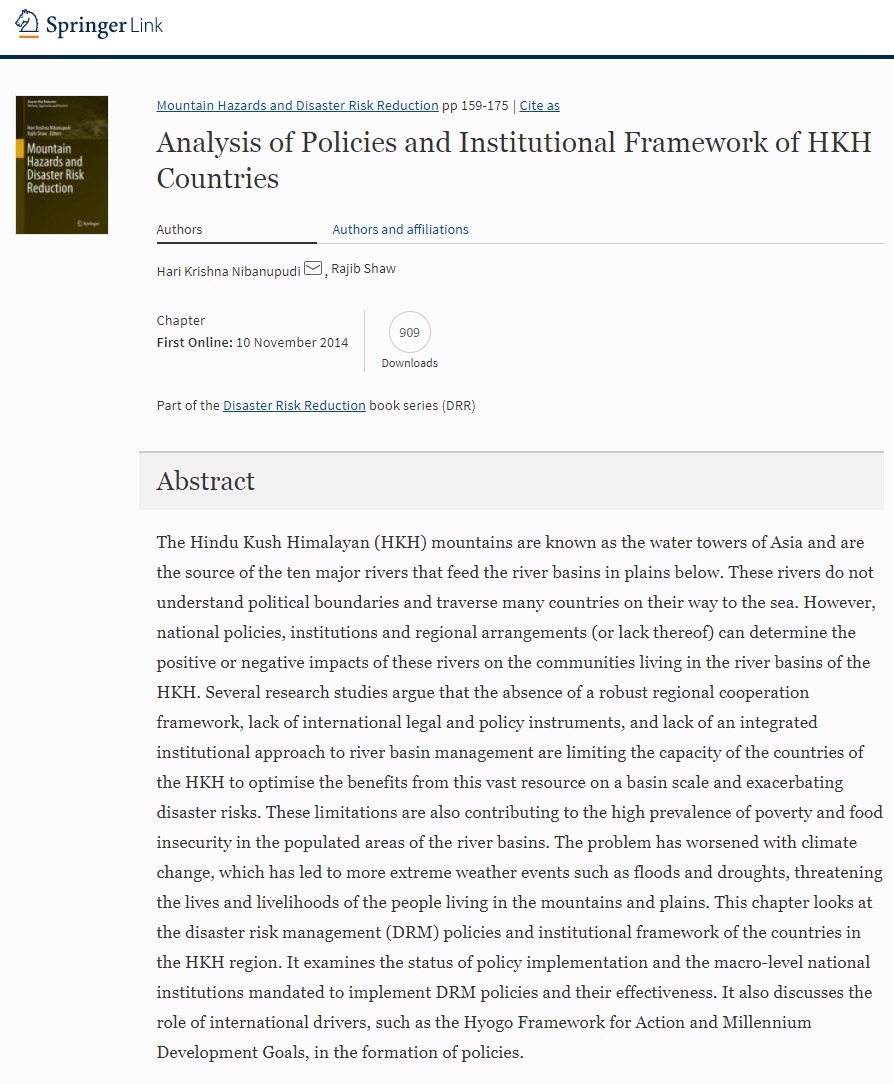
The Hindu Kush Himalayan (HKH) mountains are known as the water towers of Asia and are the source of the ten major rivers that feed the river basins in plains below. These rivers do not understand political boundaries and traverse many countries on their way to the sea. However, national policies, institutions and regional arrangements (or lack thereof) can determine the positive or negative impacts of these rivers on the communities living in the river basins of the HKH. Several research studies argue that the absence of a robust regional cooperation framework, lack of international legal and policy instruments, and lack of an integrated institutional approach to river basin management are limiting the capacity of the countries of the HKH to optimise the benefits from this vast resource on a basin scale and exacerbating disaster risks. These limitations are also contributing to the high prevalence of poverty and food insecurity in the populated areas of the river basins. The problem has worsened with climate change, which has led to more extreme weather events such as floods and droughts, threatening the lives and livelihoods of the people living in the mountains and plains. This chapter looks at the disaster risk management (DRM) policies and institutional framework of the countries in the HKH region. It examines the status of policy implementation and the macro-level national institutions mandated to implement DRM policies and their effectiveness. It also discusses the role of international drivers, such as the Hyogo Framework for Action and Millennium Development Goals, in the formation of policies.